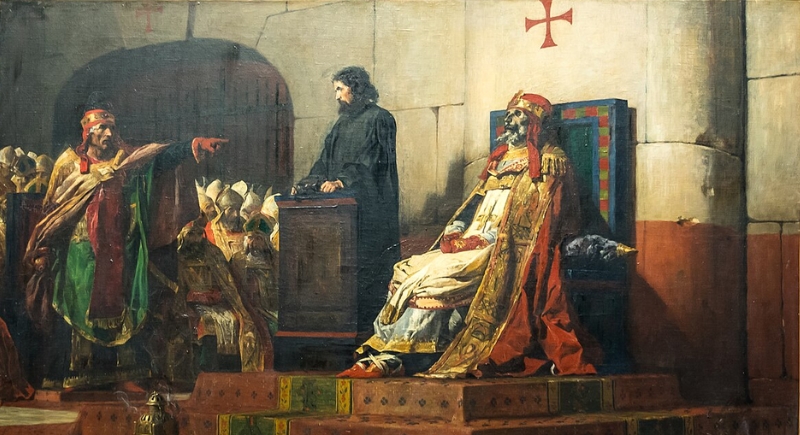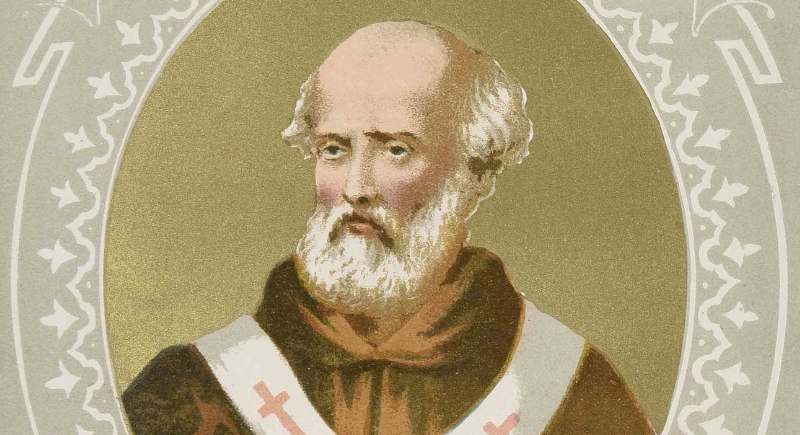True Story of a Pope Who Dug up His Dead Predecessor’s Corpse for Trial
In 897 AD, the Catholic Church staged a disturbing event that still shocks historians. Pope Stephen VI demanded that the body of his predecessor, Pope Formosus, be dug up and placed on trial in Rome. The corpse had been buried for months and showed clear signs of decay, yet it was dressed in papal robes and presented on a throne before an assembly.
The bizarre scene became known as the Cadaver Synod, and it revealed how unstable and hostile the era had become.
A Church Pulled Apart by Power

Image via Wikimedia Commons/Raimond Spekking
The Cadaver Synod unfolded in a climate shaped by the collapse of unity after Charlemagne’s reign. His empire fractured into competing territories, which created conflict among nobles and rulers across Europe. Rome became a battleground for influence, and the papacy turned into a political trophy. Powerful families and factions tried to control papal elections, and the office no longer rested on spiritual reputation.
Each new pope had to navigate violent competition, foreign threats, and changing loyalties. Formosus rose through the ranks during this turmoil and gained strong support, but he also attracted determined rivals. His alliances placed him at the center of major disputes that shaped Italy and the Church. That same chaos later empowered Stephen VI, who used the papal throne to carry out a public act of revenge. The stage was set long before the proceedings began, and the Cadaver Synod reflected the bitterness driving Rome during this period.
A Legacy That Sparked Bitter Retaliation
Formosus gained attention as Bishop of Portus and earned respect through missionary work in Bulgaria. His growing reputation stirred opposition, and he faced accusations that linked him to political ambitions. He eventually became pope, and his decisions created deep resentment within the Spoletan dynasty, which claimed influence in Italy. Formosus supported Arnulf of Carinthia in an effort to weaken Spoleto power and crowned Arnulf as emperor.
Soon after, Arnulf suffered paralysis and lost momentum, and Formosus lost his life. The Spoletans regained control in Rome and backed Stephen VI, who then targeted his predecessor. He arranged a posthumous hearing to destroy Formosus’ legacy and invalidate his acts.
The remains, placed in papal vestments, received accusations of violating canon law and holding multiple bishoprics. A deacon stood beside the throne and answered on behalf of the dead pope. The outcome was guaranteed, and the spectacle aimed to humiliate the bishop publicly in a setting that resembled a theatrical performance instead of a legal proceeding.
Punishment, Riots, and a Final Burial

Image via Wikimedia Commons/Municipal Library of Trento
Stephen declared Formosus guilty and stripped the body of its robes. He ordered the removal of the three fingers used for blessings and demanded that the body be buried in a common grave. Later, he had it dug up again and thrown into the Tiber River.
Reports claim that clergy or a fisherman recovered the remains and hid them. Roman citizens reached their limit after witnessing the trial and the repeated desecration. Public anger turned into open revolt, and Stephen was imprisoned and strangled. Later popes condemned the Cadaver Synod and restored Formosus’ honor.
His body returned to St. Peter’s Basilica, and laws were issued to prevent future trials of the dead. Years passed, and Pope Sergius III revived the charges, yet the Church eventually rejected every claim. Although Formosus’ reputation recovered, the papacy carried the stain of the Cadaver Synod for generations and never repeated a spectacle of that nature.